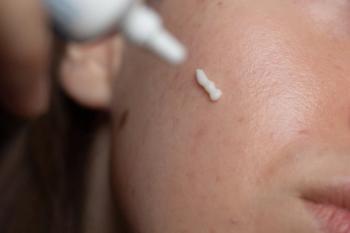
Differentiating IL-31 and IL-13 Inhibition in Atopic Dermatitis
Key Takeaways
- Nemolizumab, an IL-31 inhibitor, shows superior itch relief in AD but less consistent skin clearance compared to IL-13 blockers like dupilumab.
- Direct head-to-head trials are needed to confirm the comparative efficacy of IL-31 and IL-13 inhibition in AD treatment.
At RAD 2025, Matthew Zirwas, MD, explored the distinct clinical profiles of IL-31 and IL-13 inhibitors, highlighting nemolizumab’s potential superiority for itch relief.
“Nemolizumab is a drug that we really should be thinking about in our patients who are particularly itchy and are willing to wait longer for the rash to get better, or willing to maybe not have the rash ever get quite as good as it could if we blocked IL-13 instead. But we don’t have any answer. We won’t have an answer unless we get a head-to-head trial,” said Matthew Zirwas, MD, in an interview with Dermatology Times.
Zirwas, a board-certified dermatologist at Bexley Dermatology in Columbus, Ohio, presented an overview of targeting IL-31 versus IL-13 in atopic dermatitis (AD) alongside Raj Chovatiya, MD, PhD, MSCI, and Christopher Bunick, MD, PhD, at the
Zirwas first acknowledged the evolving understanding of cytokine signaling in AD pathogenesis. While both IL-31 and IL-13 contribute to disease activity, their effects on itch and skin inflammation differ. IL-13 blockade, as achieved with therapeutics such as dupilumab and tralokinumab, has demonstrated efficacy in both itch and skin clearance, with Zirwas suggesting an estimated “8 out of 10” effect on both end points.
In contrast, IL-31 inhibition, shown in nemolizumab, appears to offer a distinct therapeutic profile. Nemolizumab has shown a potentially superior effect on itch relief, which Zirwas qualitatively rated as “9 out of 10,” with somewhat less consistent improvement in rapid skin clearance. His interpretation of available data suggests a possible “7 out of 10” effect on rash reduction, positioning nemolizumab as a strategically valuable option for patients whose disease burden is dominated by intense itch, even if erythema remains partially refractory.2
Importantly, Zirwas emphasized that these comparisons remain speculative in the absence of direct head-to-head trials, which are unlikely in the near term. He argued that clinicians should conceptualize IL-31 inhibition not as inferior to IL-13 blockade, but as differently effective, with use in select phenotypes, particularly where itch severely affects quality of life and rash clearance is a secondary goal.
Zirwas also reflected on the unique academic and collaborative environment at RAD. He discussed the value of sharing the stage with colleagues deeply immersed in AD pathophysiology and therapeutics, noting that the level of discourse at RAD elevates clinical dialogue beyond what is typically encountered at general dermatology meetings. He praised the meeting’s ability to encourage cross-specialty engagement—from pharmaceutical development to real-world patient care—and considered it a rare opportunity to bring everyone together in one space.
References
- Chovatiya R, Bunick C, Zirwas M. Medical crossfire: IL-31 and IL-13. Presented at: 2025 Revolutionizing Atopic Dermatitis Conference; June 6-7, 2025; Nashville, TN.
- Silverberg J, Laquer V, Stein-Gold L, et al. Nemolizumab long-term safety and efficacy up to 104 weeks in the ARCADIA open-label extension study in adolescents and adults with moderate-to-severe atopic dermatitis. Poster presented at: 2025 Revolutionizing Atopic Dermatitis Conference; June 6-7, 2025; Nashville, TN.
Newsletter
Like what you’re reading? Subscribe to Dermatology Times for weekly updates on therapies, innovations, and real-world practice tips.


















